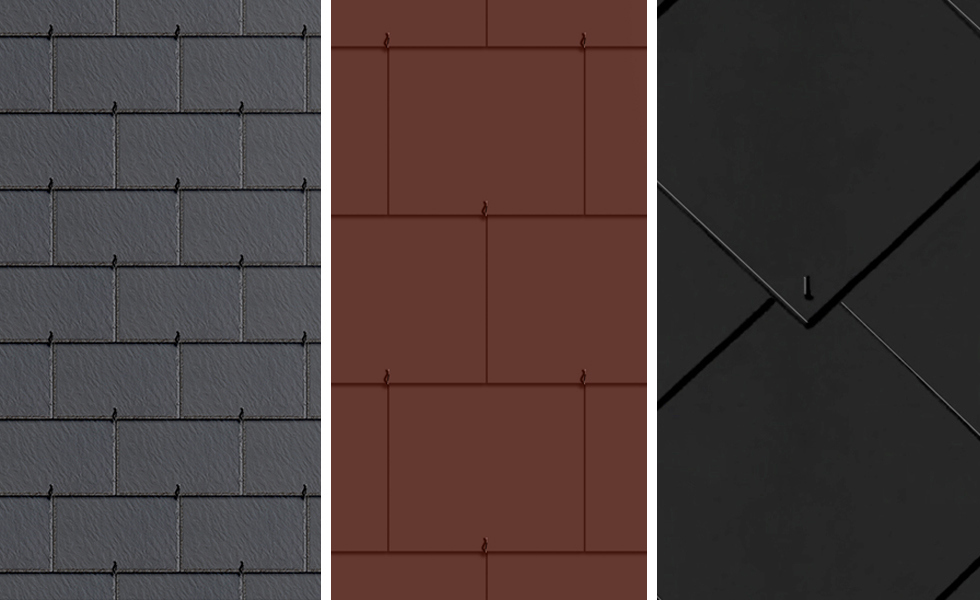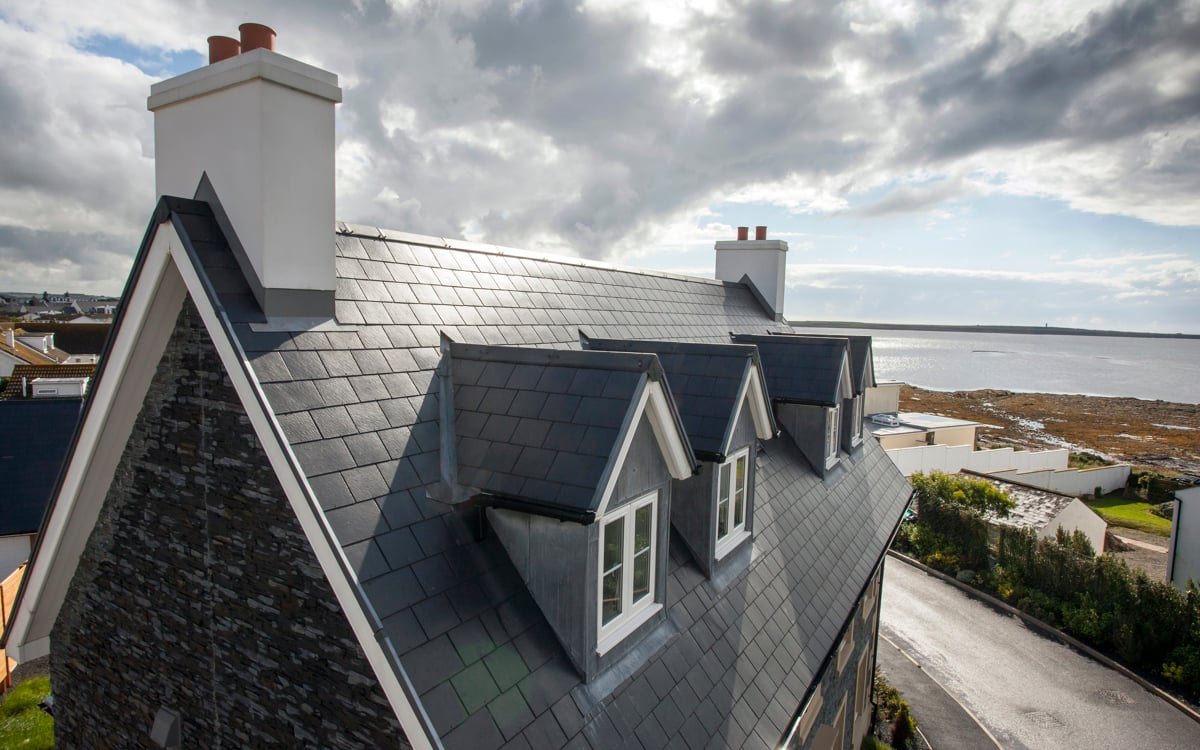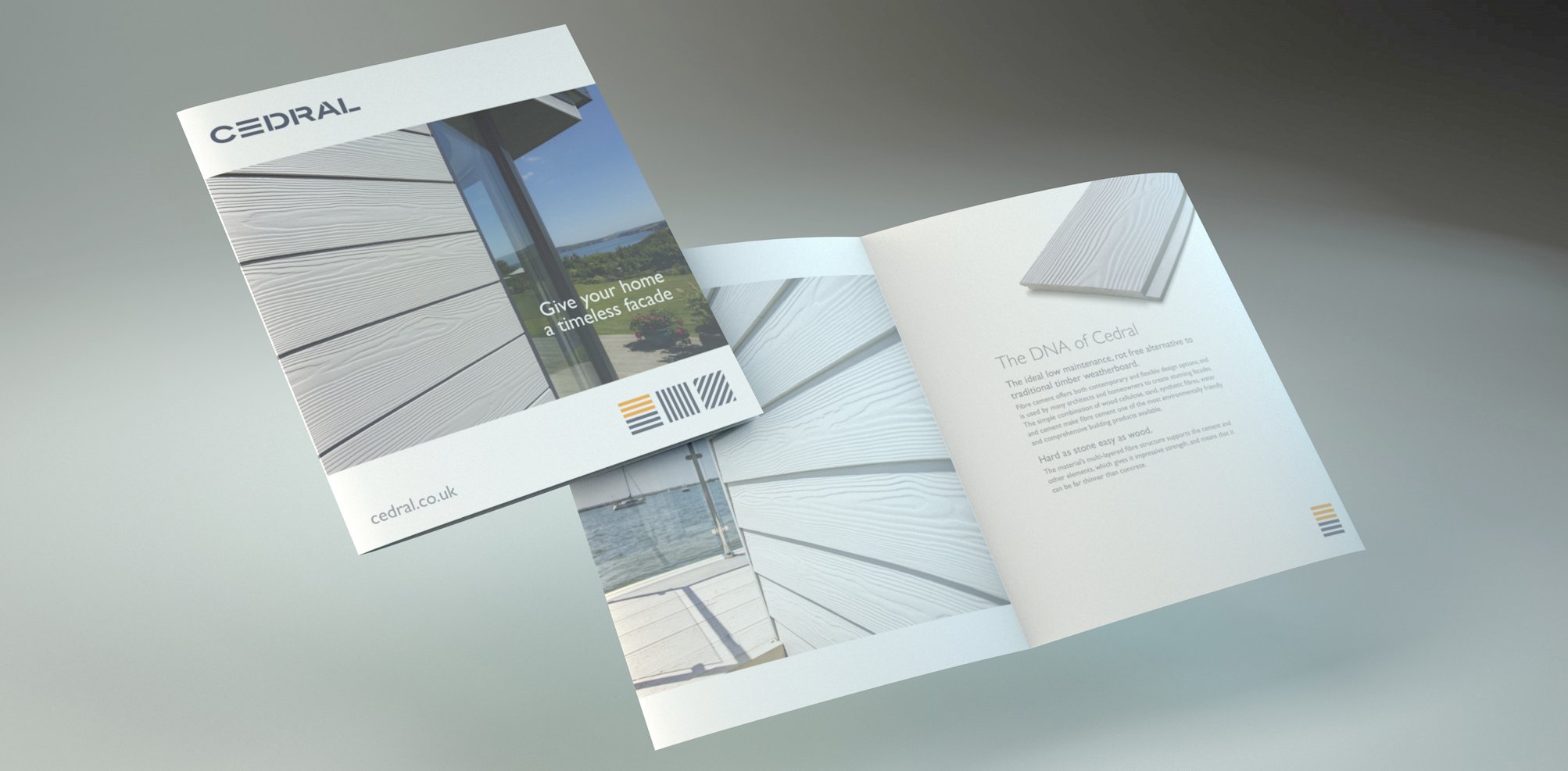The texture of your roofing largely determines the look of your house. But did you know that a natural slate look doesn’t have to be expensive? Whether you like natural or modern, with fibre-cement slates you have a lot more design options for your roof.

Where does slate come from?
Slate is a natural material made of metamorphic rock, mainly composed of minerals such as quartz, sericite and chlorite. It is formed by compression deep in the Earth and is extracted in big blocks. Thanks to its fine-grained foliated structure, it can be cut into thin layers that are commonly used to make roof shingles or floor tiles.
A slate roof is very common in certain regions. It is a type of roofing that became very popular at the end of the 19th century because of its durability, natural aspect and low maintenance. As slate hardly absorbs water, it is very resistant to frost damage. Traditionally, roofs were fitted with rows of overlapping slate shingles, allowing the rain to cascade down the slope without infiltrating into the building.
More recently, natural slate has been replaced by manufactured slates made from fibre-cement. They are just as strong thanks to the ingenious mix of fibres and cement, but they weigh less and are more regular, making installation easier and more economical. As for the looks, fibre-cement slates give your home exactly the same appearance but for only a fraction of the price of natural slate.

Different slate textures and colours
The texture of slate shingles is important for your roof. The smoother the surface, the tighter the fit between them, reducing the risk of water infiltration. The denser the type of slate, the more robust your roof will be so that you can enjoy your slate roof for a life-time and beyond. And last but not least, the grain of the slate shingles determines the look of your home, allowing you to create authentic, natural designs.
The same textures have been recreated in fibre-cement slates too. You can choose from smooth or grained surfaces, from square cut or dressed edges and there are even slates with rounded corners for that special effect. This allows you to go traditional, but also modern in your design.
Natural slates mainly come in shades of grey. The more carbon they contain, the darker their colour. But depending on the minerals in the slate, they can also have a blue, purple or red hue. The advantage of fibre-cement slates is that they come in various factory-applied colour-fast colours, giving you additional design freedom.
Have a look at the array of Cedral slate colours and textures.

Go for the natural look for your roof
Natural slate gives your roof that authentic look. The colour, thickness and texture of the natural slate shingles will depend on where it has been extracted. The same look, but more uniform and easy to fit, also exists in fibre-cement slates.
The Rivendale slates, for instance, have a finely detailed surface and dressed edges that reproduce the attractive appearance of natural slate at a fraction of the cost. They exist in different shades that you can combine to your heart’s content. These fibre-cement slates are ultra-durable and impervious to mould and fire. What’s more, they are known for their low maintenance.

Or do you prefer modern and smooth?
With natural slates, you get what nature gives you. The texture, thickness and colours are not uniform. The advantage of fibre-cement slates is that they are dyed to achieve any colour and moulded into different textures and shapes. So next to the natural look, there are also many slates that are smooth, giving your roof and home a modern feel.
More regular shapes and different slate sizes also allow you to play with the roof patterns. It is even possible to continue your roof on your facade for that exceptional effect. Or you play with different colours of slates to stand out. At the same time, these modern fibre-cement slates are just as resistant to the weather as their natural counterpart, but lighter and more economical.
Discover the different fibre-cement options for your roof.
